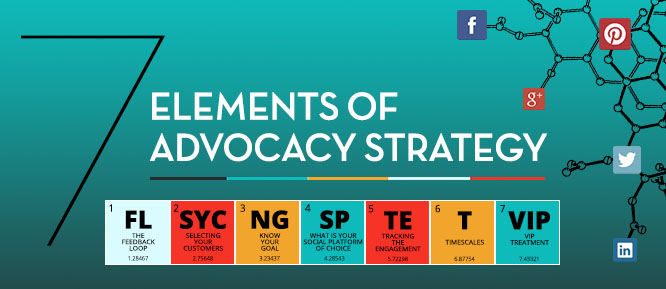The very first step in persuading customers to act as ambassadors for your brand is to treat them with respect and make sure not only your product but your customer service is utterly customer-centered. Your whole brand should revolve around your customers.
Once you are satisfied that your priorities are right, then you can build on this and work towards an advocacy program. Like your brand, your advocacy program should be similarly customer-focused. Think about what your communication can do for them and develop a two-way conversation. This is the basis of true engagement.
1. The feedback loop
It’s great to listen to your customers, whether they are giving positive or negative feedback, but it’s another thing to put that feedback into action. The best brands not only listen to their customers, but make the changes they feel are necessary, and then credit this back to the customers.
On Dell’s community website Ideas Storm section, customers are encouraged to submit ideas to improve products or introduce new features. They are then publicly celebrated as the brains behind the changes.
Crediting customers and saying “thank you” are essential in letting your customers know you really do value them. Customers who feel part of the brand experience are more likely to act as ambassadors for that brand.
2. Selecting your customers
The first thing your customer advocacy program must do is identify the group of customers you want to select to act as brand advocates. There are several ways you may wish to do this. You could use listening tools to identify the most vocal customers online. Or you could send out a questionnaire to determine which customers think most highly of your company. But what we suggest to our clients is to not boil the ocean, but to either look inside your current communities (within your forums or on your social media sites/groups), or start with your CRM database and build out social profiles for your most loyal customers, or a combination of both.
3. Know your goal
The important thing is that you don’t take a one-size-fits-all approach: you need to be sure of the goal of your advocacy program. Try to make the goal as specific as possible, and make sure you can measure its effectiveness. How does your advocacy program fit in with your wider marketing goals? Think about whether you are trying to achieve awareness of a new product line, create long-term brand loyalty, build a list for marketing material, or cultivate a group for feedback on new ideas. We also like to bring an important element of best-known practices into these discussions with our clients, making sure we provide solid lessons based on a variety of other campaigns we ran in the past.
4. What is your social platform of choice?
Is your customer advocacy drive going to be online or offline? If you are looking to drive social conversations and recommendations online through extensive sharing, you will need to build the strategies and tactics specific to the platforms of your choice into your wider program and content strategy, making it easier for your members to engage in and filter out specific conversations based on their interests. A tactical example of this would be including specific hashtags in all your relevant media.
5. Tracking the engagement
Whatever tool or platform you decide to use to host your program on – there are several in the market that would allow you to organize and manage your program easily and effectively (disclosure: Branderati is one of them) – make sure it offers a full dashboard to track the conversations, shared brand content, newly created content by your advocates, and the impact it has on not only on online buzz, but on sales (or at a minimum on purchase intent).
6. Timescales
Have you thought about the timescales of your customer advocacy program? As well as deciding specific goals, you should think about whether you will be working towards long-term engagement or if your program will have an end date. If your goals are long-term it is worth setting out how you plan to keep up momentum over a period of several years to ensure your program doesn’t run out of steam. Think about a long-term content creation plan, timetabling events, gamification elements to keep the members interested and engaged, and a feedback system to ensure you know how your customers’ needs evolve over time.
7. VIP treatment
Finally, treat your advocates like VIPs. Offer them something that not every customer has access to. It can include incentives, such as paid trips to product launches and free samples of products ahead of the full launch, but doesn’t have to be monetary. What your advocates are looking for the most is behind-the-scenes information and public recognition. Publicly recognizing your band advocates is a great way of thanking them for all their hard work on your behalf.
Customer advocacy programs are best when they are created for long-term engagement. Fans will invest in your brand if they feel that your brand is investing in them. Instead of building short-term marketing campaigns, invite your fans in, connect with their passion points, celebrate them, and ignite the movement.
Originally ran in Social Media Today

